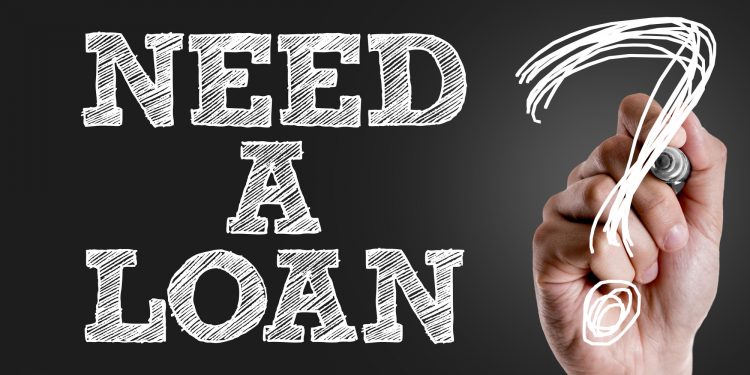Comprehending the Impact of Rates Of Interest on Home Loans for First-Time Buyers
Browsing the labyrinth of home loans can be discouraging for newbie customers, especially when rate of interest play an essential duty fit their economic journey. The option between adjustable-rate and fixed home loans lugs substantial effects, influencing monthly budgets and long-term financial stability. As rates of interest vary with financial changes, recognizing their resolution ends up being crucial. What approaches can these purchasers employ to protect the most positive terms? And just how do these decisions straighten with personal monetary objectives and run the risk of resistance? Discover these questions to equip your course to homeownership with self-confidence and foresight.
How Rates Of Interest Are Identified
Passion prices on home car loans are identified by an intricate interaction of economic factors and policies. The primary vehicle driver is the financial policy set by main financial institutions, such as the Federal Reserve in the United States, which readjusts the federal funds rate to affect economic activity. When the reserve bank increases this price, obtaining comes to be much more pricey, usually bring about raised mortgage rate of interest. On the other hand, lowering the federal funds rate can make loaning less costly, possibly reducing home loan rates.
Another influential element is inflation. Greater rising cost of living normally causes greater interest prices as lending institutions require more go back to counter the lowering buying power of future settlements. Economic growth additionally plays an essential function; in durations of robust economic efficiency, demand for credit scores increases, which can increase rate of interest.
Additionally, the bond market considerably impacts home mortgage prices. Long-lasting rates of interest, including those for home fundings, are very closely connected to yields on government bonds. As bond yields increase, so do mortgage rates, mirroring the enhanced cost of lasting borrowing.

Kinds of Rates Of Interest
Comprehending the various kinds of rate of interest rates is integral to understanding just how mortgage function. There are largely 2 classifications of rates of interest that customers encounter: dealt with and variable. A fixed rate of interest price stays consistent throughout the regard to the finance. This offers predictability in monthly repayments, providing customers with security and convenience in budgeting. It is particularly helpful in settings where future rate of interest rises are expected.
On the other hand, a variable rate of interest rate, likewise referred to as a flexible rate, rises and fall gradually, normally in reaction to adjustments in a defined benchmark or index. These rates often start less than dealt with prices, which can be attractive to new buyers. They entail the threat of enhancing over time, possibly resulting in greater general prices if market prices increase. pre approval student loans.
Furthermore, some lending institutions supply hybrid rates of interest, incorporating components of both taken care of and variable prices. An introductory period with a set rate may be followed by a variable price. Recognizing these differences is vital for debtors to make enlightened decisions that align with their monetary circumstances and take the chance of tolerance, as each kind offers distinct benefits basics and possible disadvantages.

Effect On Regular Monthly Repayments
Regular monthly repayments on home finances are straight affected by the type of passion rate picked, which can substantially impact a borrower's economic planning. Fixed-rate home mortgages supply stability, as the interest price stays the same over the finance's term, making certain that monthly settlements continue to be continuous.
Fixed-rate fundings safeguard versus market volatility, using peace of mind yet typically at a higher initial price compared to ARMs. On the various other hand, ARMs may match customers expecting revenue growth or those intending to offer prior to the rate change happens, allowing them to capitalize on lower repayments.
Lasting Financial Ramifications
The choice of rate of interest type for a mortgage expands past immediate regular monthly repayments, bring considerable long-lasting monetary implications. A fixed-rate home loan, for instance, provides stability by securing in interest prices for the duration of the financing term, securing borrowers from future rate boosts. This predictability can aid in long-lasting monetary planning, permitting home owners to anticipate costs without the risk of increasing payments. Nonetheless, if market rates drop, debtors with a fixed-rate mortgage might miss out on out on prospective savings unless they refinance.
Alternatively, an adjustable-rate home loan (ARM) normally starts with a reduced passion rate, which can lead to reduced initial settlements. Gradually, nevertheless, the price can vary based on market problems, potentially bring about greater repayments. This variability presents an aspect of unpredictability, which might affect monetary stability if rates enhance significantly.

Techniques for Managing Prices
Navigating passion rates on home fundings requires critical planning to enhance financial end results. New homebuyers should consider securing in rate of interest prices when they are beneficial, as this can protect them from potential price walks before their funding closing.
Another technique includes choosing the ideal financing type. Fixed-rate mortgages provide stability, securing consumers from future rate rises, while variable-rate mortgages (ARMs) may provide lower preliminary prices with the risk of future modifications. Customers ought to meticulously evaluate their economic circumstance and risk tolerance when picking between these choices (pre approval student loans).
Finally, keeping a solid credit report account is important. A greater credit history can dramatically boost negotiation power for more desirable rate of interest. Regularly examining debt reports, dealing with mistakes, and reducing outstanding financial debt can boost overall creditworthiness, consequently positioning buyers these details to protect one of the most helpful rates readily available.
Conclusion
A detailed understanding of interest rates on home mortgage is essential for first-time purchasers to make informed decisions. Fixed-rate home loans offer stability with predictable payments, protecting against future rate rises, while adjustable-rate home mortgages present initial savings with potential future price volatility. Evaluating the influence on month-to-month settlements and long-lasting economic wellness enables buyers to straighten choices with financial goals and risk resistance. Strategic administration of interest prices can considerably affect homeownership success and economic health.
When the main bank raises this price, borrowing becomes much more pricey, usually leading to increased home loan interest rates.In contrast, a variable rate of interest rate, likewise understood as a flexible price, fluctuates over time, generally in action to modifications in a defined criteria or index.In addition, some lending institutions offer hybrid rate of More Help interest prices, incorporating elements of both fixed and variable prices - pre approval student loans. A fixed-rate mortgage, for example, offers stability by locking in interest rates for the duration of the lending term, shielding debtors from future rate boosts. Novice buyers ought to think about locking in passion rates when they are favorable, as this can secure them from prospective price walkings prior to their lending closing